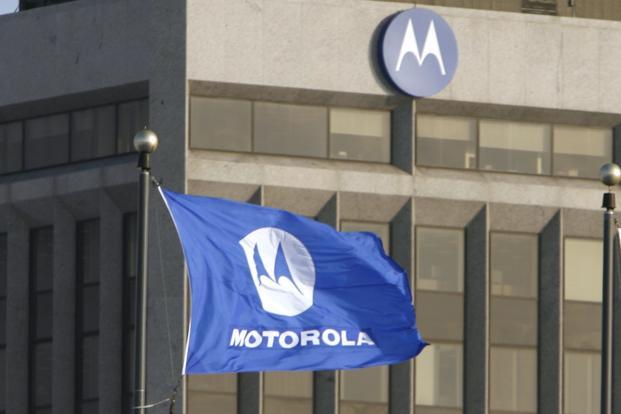Motorola, a name synonymous with innovation and communication, has been a driving force in the tech industry for over 90 years. From its humble beginnings as a radio manufacturer to its current status as a major player in the smartphone market, Motorola’s journey is a testament to human ingenuity and a relentless pursuit of progress.
Early Days: Radio Waves and Revolution
Founded in 1928 by the Galvin brothers, Motorola initially focused on car radios, forever changing the way people experienced entertainment on the go. Their iconic “Motorola 5T Superheterodyne” radio, introduced in 1930, was a commercial success and solidified the company’s reputation for quality and reliability.
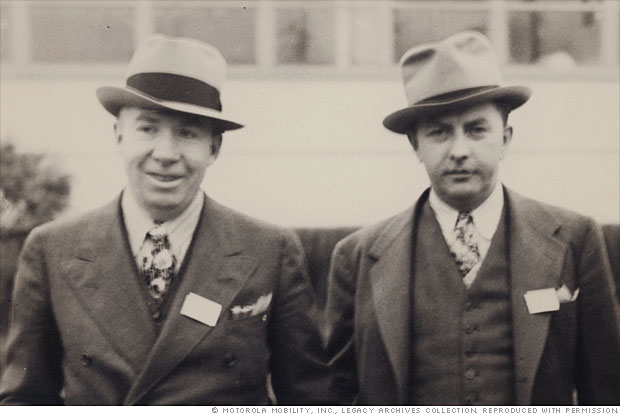
During World War II, Motorola played a crucial role in developing communication technologies for the military. Their walkie-talkies, like the SCR-536, became essential tools for battlefield communication, paving the way for future advancements in mobile communication.
Post-War Boom and the Birth of the Cell Phone
The postwar era saw Motorola diversify its offerings, venturing into new markets like televisions and semiconductors. However, it was in the field of mobile communication that the company truly made its mark. In 1973, Motorola engineer Martin Cooper made the first-ever public cell phone call, using a prototype handset to reach rival John F. Mitchell of AT&T. This historic event marked the dawn of a new era in communication, and Motorola was at the forefront.
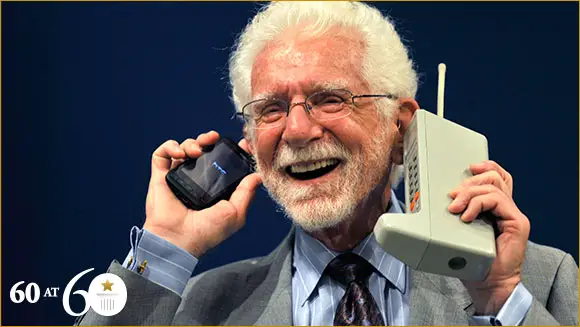
In the following decades, Motorola continued to push the boundaries of mobile technology. They introduced the iconic DynaTAC 8000X, the first commercially available handheld mobile phone, in 1983. This “brick phone,” as it was affectionately called, was a technological marvel for its time, and it laid the foundation for future generations of mobile devices.
The Rise and Fall of a Tech Giant
Motorola’s dominance in the mobile phone market continued throughout the 1990s and early 2000s. The company’s Razr V3, released in 2004, was a cultural phenomenon, selling over 130 million units and becoming a symbol of style and sophistication.
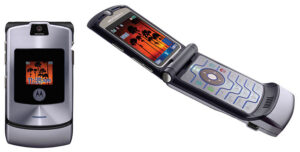
However, the rise of competitors like Apple and Samsung, coupled with Motorola’s slow adaptation to the changing smartphone landscape, led to a decline in market share. In 2011, the company split into two separate entities: Motorola Mobility, focused on consumer devices, and Motorola Solutions, specializing in enterprise communication solutions.
A New Chapter: Reimagining Mobility
In 2014, Motorola Mobility was acquired by Lenovo, marking a new chapter in the company’s history. Under Lenovo’s leadership, Motorola has made a remarkable comeback, focusing on delivering affordable, high-quality smartphones with a renewed emphasis on user experience.
Today, Motorola offers a diverse range of smartphones, from the budget-friendly Moto G series to the flagship Moto Edge series. The company is also exploring new technologies like foldable phones with the Razr revival, demonstrating its commitment to staying at the forefront of innovation.
Motorola’s legacy is one of pioneering spirit, technical expertise, and a dedication to connecting people. From its early days in radio broadcasting to its current role in shaping the future of mobile communication, Motorola continues to be a driving force in the tech industry, reminding us that the power of communication can truly change the world.
Marketing Strategies of Motorola
Motorola, once a titan in the mobile phone industry, found itself facing an uphill battle in the smartphone era. But instead of fading into obscurity, the iconic brand staged a remarkable comeback, reclaiming its place as a major player in the smartphone market. This resurgence wasn’t simply a matter of luck; it was the result of thoughtful, strategic marketing that empowered Motorola to not only reconnect with its loyal fans but also attract a new generation of tech-savvy consumers.
1. Nostalgia with a Modern Twist
Nostalgia was just the spark; the real magic lies in how Motorola fanned it into a roaring fire with a modern twist by re-releasing its popular Razr phone from the early 2000s in 2019 with modern touchscreen technology. The new Razr blends the charm of a flip phone with the convenience of a modern smartphone.Here’s a deeper dive into how they pulled it off:
Respecting the Roots: They didn’t simply slap old names on new devices. The Razr was reborn with a futuristic foldable screen, preserving the iconic silhouette while embracing cutting-edge technology. This showed reverence for the past while confidently stepping into the future.
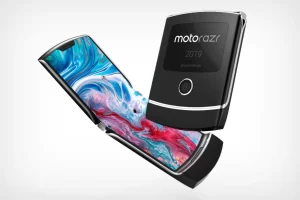
Evolution, Not Imitation: The revival went beyond aesthetics. The new Razr wasn’t simply a smaller smartphone; it was a powerful communicator with unique features like Quick View and external display, catering to modern needs while maintaining the essence of its predecessor.
Targeting the Right Emotions: They tapped into the sentimentality of owning a piece of history, sparking excitement in those who remembered using the original Razr and curiosity in younger generations yearning for a taste of retro cool.
Building Bridges through Design: The foldable form factor wasn’t just a gimmick; it became a tangible link between the old and the new. The act of flipping open the Razr evoked memories of the OG model, yet the experience was undeniably modern and innovative.
Community Engagement: They actively engaged with fans online and offline, showcasing heartfelt tributes to the old Razr while highlighting the features and benefits of the new one. This created a sense of shared ownership and excitement around the revival.
The Impact:
Motorola’s nostalgia play wasn’t just about sales; it was about rebuilding brand affinity. It reminded loyal customers why they loved the brand in the first place while capturing the attention and imagination of a new generation. This emotional connection became the foundation for their broader marketing strategy, paving the way for their impressive comeback.
2. Value Champions: Democratizing Tech
Motorola didn’t just shout “value”; they became champions of democratizing technology, making cutting-edge features accessible to a wider audience. Here’s how they pulled it off:
Redefining “Affordable”: The Moto G and Edge series weren’t just cheap alternatives; they offered impressive specs and features at prices significantly lower than competitors. This wasn’t just about saving customers money; it was about removing the price barrier and letting everyone experience the latest advancements in mobile technology.
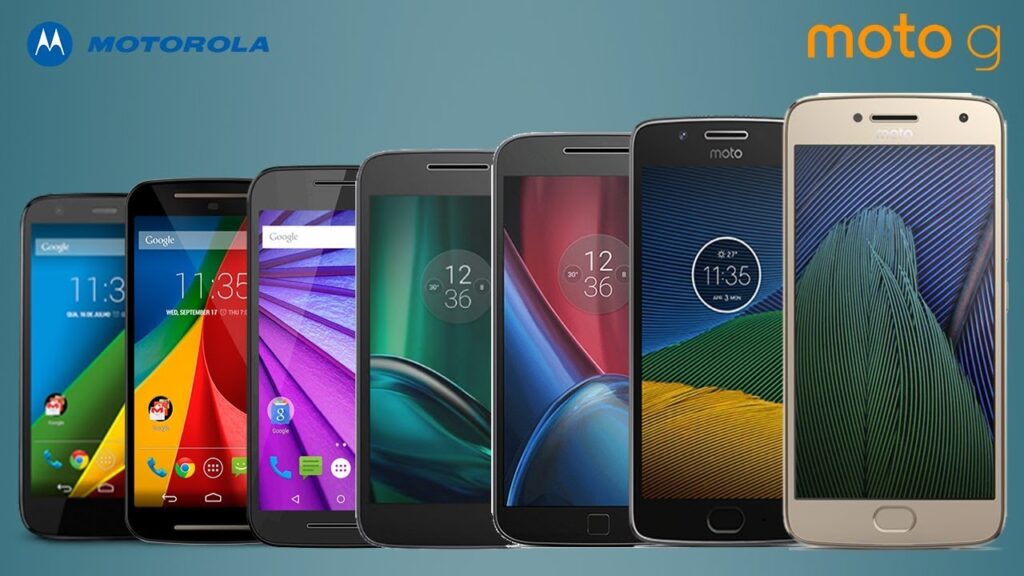
Prioritizing Performance: Motorola didn’t compromise on quality. Their affordable phones boasted powerful processors, ample RAM, and high-resolution cameras, ensuring a smooth and responsive user experience that wasn’t limited to flagship devices.
Feature Focus: They went beyond raw specs and prioritized features that mattered to their target audience. Long-lasting batteries, expandable storage, and intuitive software became hallmarks of their value proposition, ensuring their phones met everyday needs without breaking the bank.
Breaking the Flagship Mold: Affordable didn’t have to mean boring. Motorola offered unique design elements and innovative features like the Edge series’ waterfall display and the Razr’s foldable screen, proving that value didn’t have to come at the expense of aesthetic appeal or cutting-edge technology.
Catered to Diverse Needs: They recognized that “value” is subjective. The Moto G series provided a range of options at different price points, while the Edge series catered to those who wanted premium features without the premium price tag. This differentiation within the “affordable” category ensured every customer found a phone that fit their budget and needs.
The Impact:
Motorola’s focus on value wasn’t just a marketing tactic; it was a philosophical shift. They empowered budget-conscious consumers to experience the latest mobile technology, closing the gap between affordability and innovation. This resonated with a large segment of the market who were tired of feeling priced out of cutting-edge features. As a result, Motorola not only gained market share but also earned the loyalty of customers who felt they were prioritizing their needs and wallets instead of just chasing profits.
3. Digital Domination: Engaging the Connected Generation
Motorola didn’t just dip their toes into the digital pool; they dove headfirst, becoming proficient digital citizens and captivating the attention of the ever-connected generation. Here’s how they reigned supreme in the online sphere:
Content is King: They understood the power of engaging, visually stunning content tailored to their target audience. Eye-catching product photographs, lifestyle videos showcasing the phones’ capabilities, and humorous meme-worthy clips flooded their social media feeds, resonating with the fast-paced, attention-grabbing nature of online platforms.
Platform Powerhouse: They weren’t content with being everywhere; they mastered specific platforms like Instagram and TikTok. Collaborating with influencers who aligned with their brand values, creating interactive hashtag campaigns, and participating in trends kept them relevant and top-of-mind in the ever-changing digital landscape.
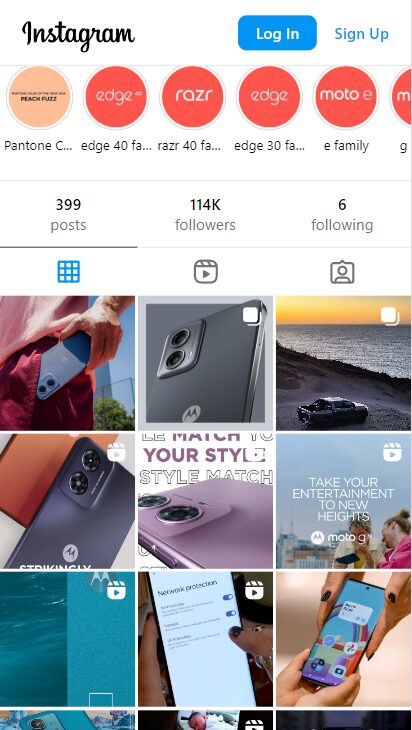
Breaking the Fourth Wall: Gone were the days of sterile corporate accounts. Motorola fostered a two-way dialogue with their audience, responding to comments, conducting polls, and actively engaging in conversations. This personalized approach made them feel approachable and relatable, breaking down the barrier between brand and consumer.
Gamification of Marketing: They incorporated interactive elements like quizzes, polls, and contests into their online campaigns, encouraging user participation and keeping the audience engaged. This wasn’t just about promotion; it was about creating a fun and dynamic online experience that people looked forward to being part of.
Embracing User Generated Content: They recognized the power of authentic voices and testimonials. Encouraging users to share their experiences with Motorola phones, whether through pictures, videos, or online reviews, gave the brand a much-needed credibility boost and showcased the phones in real-world scenarios.
The Impact:
Motorola’s digital dominance wasn’t just about online buzz; it translated into real-world sales and brand loyalty. Engaging with the connected generation on their turf built a sense of community and belonging, making them feel like they were part of something bigger than just buying a phone. This emotional connection, fueled by the power of online engagement, became a crucial factor in their overall marketing strategy and contributed significantly to their resurgence.
4. Collaboration: Expanding the Playing Field
Motorola understood that going solo wouldn’t win the game. They embraced strategic partnerships, expanding their reach and appeal, becoming more than just a phone maker. Let’s delve deeper into their collaborative masterclass:
Carrier Champions: Partnerships with major carriers like Verizon in the US opened doors to wider distribution channels and exclusive deals, getting their phones into the hands of more customers. This synergy leveraged both brands’ strengths, offering competitive packages and boosting Motorola’s visibility.
Brand Fusion: Creative collaborations with fashion brands like Levi’s or entertainment franchises like Star Wars created limited-edition phone designs, catering to specific fan bases and expanding their appeal beyond tech enthusiasts. These partnerships added a layer of exclusivity and excitement, attracting new customers through unique offerings.
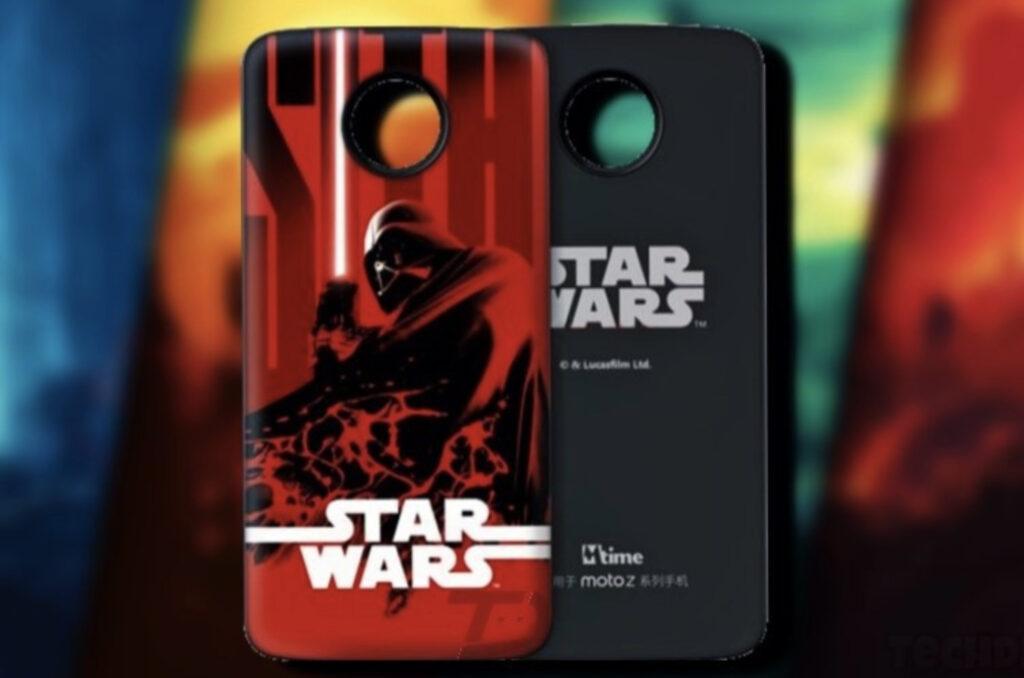
Beyond Tech: They ventured beyond the gadget world, partnering with organizations like National Basketball Association (NBA) for sports sponsorships and MTV for music-themed activations. This diversifies their image, resonating with diverse audiences who might not be solely interested in the technology itself.
Local Heroes: Partnering with regional players and local influencers in different markets allowed them to tap into cultural nuances and build stronger connections with specific communities. This personalized approach made them feel less like a global giant and more like a relatable neighbor, fostering local brand loyalty.
Win-Win Collaborations: They didn’t just seek partnerships for their own benefit. Motorola entered collaborations that offered mutual advantages, like working with camera lens manufacturers to enhance their phone’s photography capabilities. This not only improved their product but also strengthened ties with other brands in the tech ecosystem.
The Impact:
Motorola’s collaborative spirit wasn’t just about marketing gimmicks; it was a strategic way to reach new audiences and broaden their brand image. By partnering with established companies, trendy names, and local voices, they expanded their playing field, attracting diverse customers and cementing their presence in different markets. This collaborative approach proved to be a key factor in their revival, showing that sometimes, the best way to win is to play with others.
5. Customer Champions: Listening and Learning
Motorola’s comeback wasn’t just about slick ads and trendy tech; it was fueled by a fundamental shift in strategy: making customers their champions. Instead of shouting their own praises, they focused on listening, learning, and responding to user needs. Here’s how they transformed from pitchmen to champions:
Open Ears, Open Channels: They went beyond traditional surveys and feedback forms. They actively engaged with customers on social media, online forums, and even customer service calls, creating a dialogue where user voices were heard and valued. This open-door policy fostered a sense of transparency and trust, making customers feel like collaborators, not just target demographics.
Feedback Champions: The information gathered wasn’t just filed away. Motorola acted on it, promptly addressing bug reports, incorporating feature suggestions, and even tweaking their marketing based on user preferences. This responsiveness demonstrated that they genuinely cared about customer experiences and were willing to adapt to ensure satisfaction.
Community Cornerstones: They fostered a sense of community around their brand. Online forums became hubs for users to share tips, troubleshoot issues, and even celebrate each other’s successes. This collaborative spirit empowered customers, transforming them from passive consumers to active brand advocates.
User-Driven Innovation: They went beyond simply reacting to feedback. They identified trends and patterns within customer interactions, using this data to fuel product innovation. This user-centric approach ensured their products and features resonated with real-world needs and desires, setting them apart from competitors who relied solely on internal brainstorming.
The Impact:
Championing customers wasn’t just a feel-good strategy; it paid off massively. The positive word-of-mouth generated by empowered and enthusiastic users became a powerful marketing tool. Customer loyalty translated into repeat sales, positive reviews, and a strong brand image built on trust and responsiveness. This customer-centric approach became a cornerstone of Motorola’s revival, proving that sometimes, the best way to win is to simply listen to the people who matter most: your customers.
Motorola’s marketing efforts have paid dividends, with the company experiencing significant growth and a positive brand perception. As they continue to innovate and adapt their strategies, Motorola is poised to solidify its position as a major player in the smartphone market. By harnessing its rich heritage, offering compelling value propositions, embracing digital trends, and becoming champions of their customers, Motorola has proven that a well-executed comeback can be even more impactful than the initial success.
Also Read: Decoding the Marketing Strategies of Samsung Electronics
To read more content like this, subscribe to our newsletter
